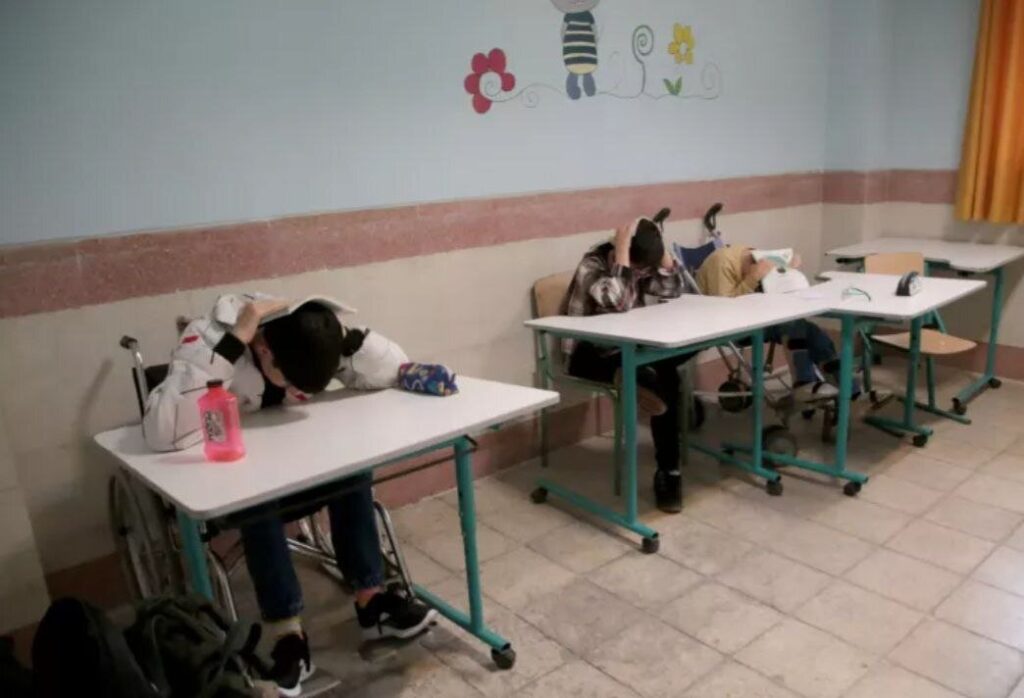Tehran – The 26th National “Earthquake and Safety” Drill marked with earthquake bells is being held simultaneously at schools across the country, specializing in safety and preparation for students with disabilities and special needs.
The purpose of earthquake training in schools is to raise awareness of earthquakes among students, prepare them to respond correctly and quickly, to become accustomed to natural disasters and to empower them to face such events.
Additionally, these drills aim to strengthen the safety culture of the community, make schools safer, and reduce earthquake casualties and damage. Special school drills aimed at promoting earthquake preparation for children with disabilities, especially those with disabilities, have also collected valuable feedback on training materials.
The drill, held on November 27, 2024, was implemented by the United Nations Children’s Fund (UNICEF) and the United Nations Education, Scientific and Cultural Organization (UNESCO), in collaboration with the International Institute for Earthquake Engineering and Seismology (IIEE), in conjunction with the ongoing project, “Educational Plan for Children with Special Needs and Disabilities.”
The initiative highlights the important importance of children with disabilities being prepared to face and mitigate the impact of natural disasters, represents an important step towards comprehensive disaster preparation, and promotes a safer and more resilient future for the younger generation of Iran.
Strengthen emergency preparedness for children with disabilities
Under a globally unique program called “Earthquake Preparation Education for Children with Disabilities,” UNICEF and its partners have developed three books. Each targets different stakeholders, including children with disabilities, teachers, and policy makers’ parents/caregivers.
Throughout the book, UNICEF and UNESCO work with IIEE to provide guidelines for disaster management, including measurement, preparation, response and recovery, focusing on children with hearing impairment, mobility disorders and autism spectrum disorders.
The development process for these books included consultations with supporting children with disabilities and their families, organizations with disabilities (OPDS), teachers at special education institutions, social workers in state welfare organizations, and workers at the Iranian Red Crescent Association (IRCS).
Additionally, four consultation training workshops were held where teachers, social workers and aid workers learned feedback on strategies to support children with disabilities before the earthquake, and provided feedback to assist them after the earthquake.
UNICEF’s Iran will work with partners to make these resources mainstream with its annual earthquake and safety training held at schools and develop comprehensive guidelines for drills.
As a first step, and for the first time, earthquakes and safety training will be organized at a special school for children with mobility disorders, advocating for comprehensive training, strengthening earthquake preparation for children and gathering feedback on the guidelines developed.
The programme journey never stops here. Plans are already underway to update the guidebook that includes guidelines for children with visual impairments and to increase resources to address all types of disorders. The initiative represents a major leap towards comprehensive earthquake preparation, ensuring a safer and more resilient future for all Iranian children, regardless of obstacles.
mt/mg

